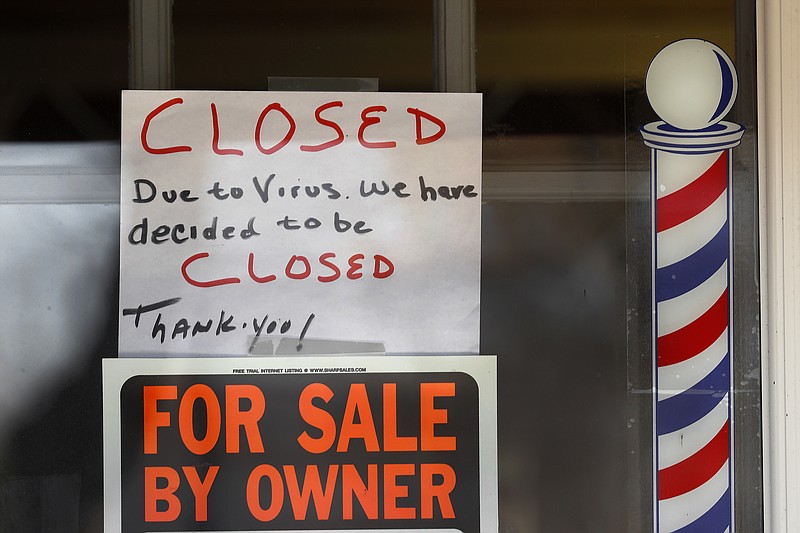One of every 10 Chattanooga workers lost his or her job in April, pushing up the unemployment rate in metro Chattanooga last month to a record 13.3% amid the coronavirus pandemic that shut down much of the local economy this spring.
Although the local jobless rate remained below both the state and national averages of 14.7% in April, unemployment in the six-county Chattanooga metro area jumped by 10% last month to surpass the worst jobless rates reached during any recession in the post World War II era.
The number of unemployed persons in the Chattanooga area more than tripled during April from the estimated 10,344 in March to 36,412 last month and the continuing rise in jobless claims during May suggests that the number of unemployed could still go higher.
With most restaurants and retail stores and many factories idled in April, employment in Chattanooga had the biggest single month drop on record. Preliminary figures show the number of employed persons fell by more than 34,000 during April as the workforce shrank and more people filed for unemployment benefits.
"We are in unprecedented times with such a sudden drop in employment and I'm afraid with the additional jobless claims we're seeing in May the jobless rate could go even higher before starting to decline," Dr. Bill Fox, director of the Boyd Center for Economic Research at the University of Tennessee, said last week.
Since the COVID-19 virus began shutting down non-essential businesses in March, a record 558,621 Tennessee workers have filed for jobless assistance in the past two months, including 57,285 persons in the 10-county Southeast Tennessee area.
Chattanooga's 13.3% jobless rate last month topped the peak 10.2% unemployment rate reached during the depths of the Great Recession in June 2009.
Chattanooga's jobless rate in April was still below the estimated unemployment rates in Dalton, Georgia, where the jobless rate jumped last month to 20.5%, or Cleveland, Tennessee, where unemployment rose to 13.5%.
Unemployment was highest in the region in the rural counties around Chattanooga with three area counties - Rhea, Grundy and Franklin counties - reporting unemployment rates above 20%.
Three rural counties in Tennessee - Sevier, Cocke and Grundy - had jobless rates above 25% in April.
The economic pain from the record high job losses has been offset, to some extent, by the most generous unemployment benefits ever provided for those able to find jobs. Last week, the Tennessee Department of Labor and Workforce Development said it paid out $375 million in jobless benefits to 333,063 claimants.
In addition to the state jobless benefits that pay up to $275 a week in Tennessee and $330 a week in Georgia, the federal government is providing up to four months of a $600 a week supplement to those benefits. As a result, the average unemployed worker in Tennessee until July 25 is receiving $830 a week in jobless benefits, or the equivalent of a $43,160-a-year salary.
Economists at the University of Chicago estimate that 68 percent of unemployed workers who can receive benefits are eligible for payments that are greater than their lost earnings. They also found that the estimated median replacement rate - the share of a worker's original weekly salary that is being replaced by unemployment benefits - is 134 percent, or more than one-third above their original wage.
Jobless in April
* Polk County, 13.4%, up from 3.6% in March * Bradley County, 13.5%, up form 3.3% in March * Hamilton County, 14.4%, up from 3.1% in March * Marion County, 14.5%, up from 3.8% in March * Sequatchie County, 16.7%, up from 3.9% in March * Bledsoe County, 16.7%, up from 4.4% in March * McMinn County, 17.3%, up from 3.6% in March * Meigs County, 18.6%, up from 4.5% in March * Van Buren, 20.1%, up from 4.7% in March * Franklin County, 21.1%, up from 3.4% in March * Rhea County, 24.5%, up from 5.% in March * Grundy County, 25.3%, up from 4.2% in March Source: Tennessee Department of Labor and Workforce Development
